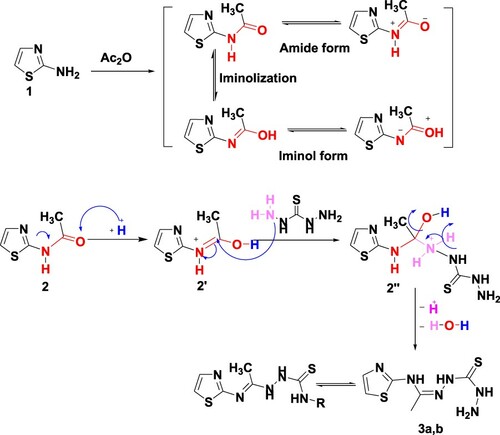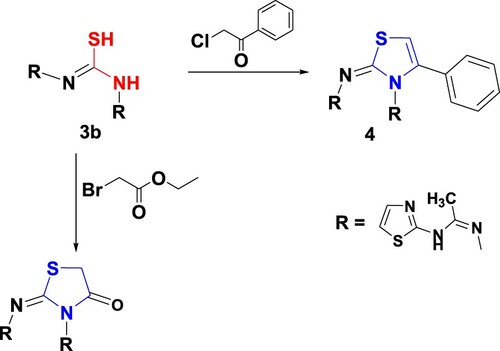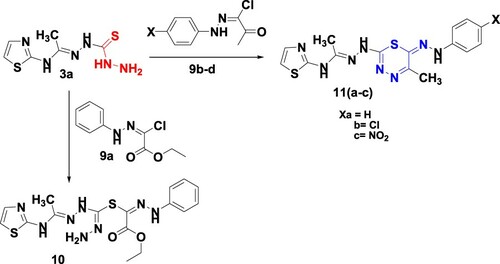Figures & data
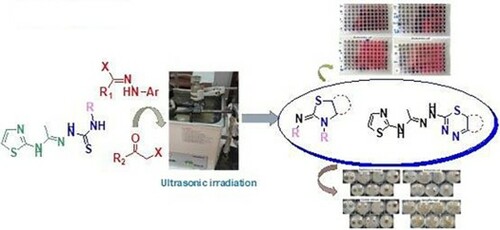
Figure 1. The growth inhibition zones of the newly synthesized compounds against Escherichia coli, staphylococcus aureus, Candida albicans and Aspergillus niger.
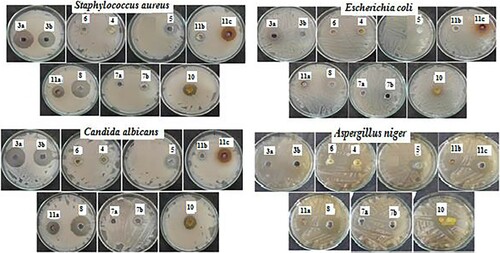
Table 1. In vitro antimicrobial activities of the newly synthesized compounds against pathogenic bacteria and fungi.
Figure 2. Minimum inhibitory concentration (MIC) and minimum bactericidal concentration (MBC) of promised compounds from the cup diffusion method 3a, 3b, 4, 5, 8, 10, 11a, and 11c against S. aureus (G+ve bacteria) and E. coli (G−ve bacteria).
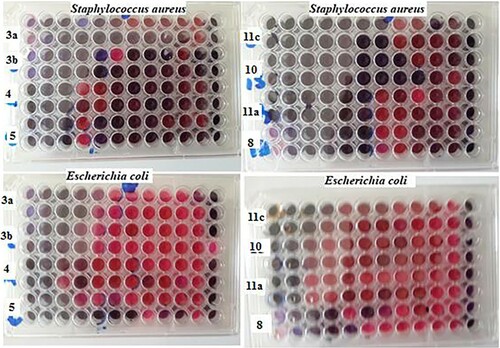
Table 2. Minimum inhibitory concentration (MIC) and minimum bactericidal concentration (MBC) of the promised compounds against S. aureus (G+ve bacteria) and E. coli (G−ve bacteria).

